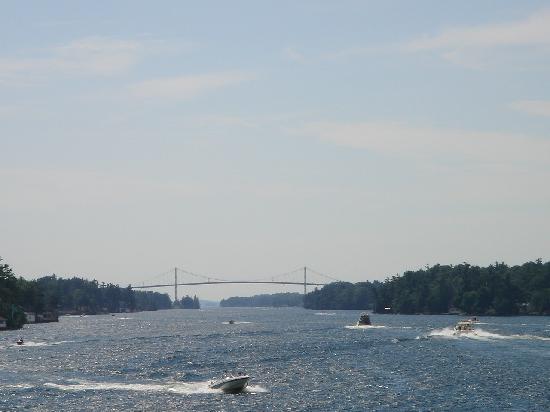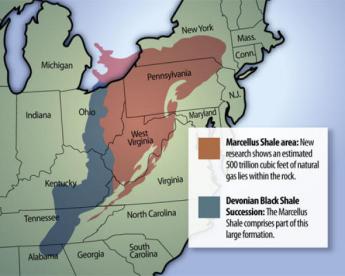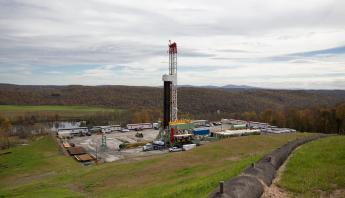Related Topics
Northern Overland Escape Path of the Philadelphia Tories 1 of 1 (16)
 Grievances provoking the American Revolutionary War left many Philadelphians unprovoked. Loyalists often fled to Canada, especially Kingston, Ontario. Decades later the flow of dissidents reversed, Canadian anti-royalists taking refuge south of the border.
Grievances provoking the American Revolutionary War left many Philadelphians unprovoked. Loyalists often fled to Canada, especially Kingston, Ontario. Decades later the flow of dissidents reversed, Canadian anti-royalists taking refuge south of the border.
Central Pennsylvania
"Alabama in-between," snickered James Carville, "Philadelphia, Pittsburgh, and Alabama in-between."
Marcellus, Where Shale Gas Comes From

|
| Map of Marcellus |
The region of upstate New York called Marcellus stretches from the tourist jewel of Skaneateles to the Onondaga Indian Reservation, where you can buy untaxed cigarettes if you wish, and get on Interstate 81 to the Canadian border. Tucked within that region is the little town of Marcellus, which is neat and cute, but almost too small for tourists to notice. It's one of those remarkable things about scientists that someone in 1840 noticed a black shale outcropping in Marcellus, and recognized it as a distinct layer of sedimentary rock. Little did they know this tiny outcropping in Marcellus was part of a layer thousands of square miles in area, containing more dissolved natural gas than the peninsula of Arabia. Even if they had realized the extent of it in 1840, the technology for extraction had yet to be invented, and the price of gas had yet to rise to a level making extraction worth the effort. And also, worth enduring what has proved to be a hornet's nest of criticism by environmentalists. Patty Weisse, the most eminent local geologist, simply shrugs her shoulders and says, "It's going to happen." Since a number of prominent scientists are firm of an opinion that alternative forms of non-fossil energy will take at least fifteen years to become practical energy sources, public pressure to develop the "Marcellus" shale gas seems indeed pretty undeniable.

|
| Route 175/ Route 174 |
First, the tourist attraction. The original shale discovery has long since vanished, but there's a big hill outside the town, meaningfully identified as Shale Hill. Two state roads intersect at that point, Routes 174 and 175, so the highway engineers created some cuts in the shale hill. That's not exactly an outcropping, and something ten feet high is not exactly a cliff, but you can certainly find shovels-full of honest to goodness Marcellus shale within a few feet of the highway. No one objects if you take a piece of the stuff home with you, but in trying to do so, you will discover something important about Marcellus Shale. It easily breaks off in your hand, and if you drop it on the floor of the car, it will crumble into dust. You have now just observed why it is possible to extract gas from it with relative ease and expense. This formation is called Devonian because there is something like it in Devon, England.

|
| Marcellus Shale |
Mostly by volcanoes and glaciers, rocks get split into gravel, gravel gets ground into sand, and sand is ground into powder. Add heat and water to the powder and you get clay. Marcellus shale is a form of clay, with a difference that it was formed at the bottom of a huge lake by fine-grained rock particles slowly drifting down to the bottom, getting later squashed by vegetation, sand, gravel, and rocks. The vegetation ferments and permeates the clay, at the rate of twenty-five cubic feet of gas to a cubic foot of shale, and a cost to extract it off about a dollar a cubic foot. The economics of extracting it is quite attractive. The mechanism for extracting it is to inject lots of water through a drill-pipe, drain out the water, and let the gas flow. Getting rid of the dirty water is a problem we will return to in a moment. One surface well can be used to drain off the gas from many different underground directions, which reduces the surface spoilage considerably. If you have fiber-optic television cable, it was most likely installed underground by such "re-directional drilling", much like the operation of a colonoscopy to extract your colon cancers and polyps. Since gas has the smallest carbon emission of any energy source except those which have no carbon emissions at all, this seems like a godsend at a time of world-wide energy uncertainty. It can be stated without much challenge that no non-carbon energy source is or will be practical for another fifteen years, except nuclear energy. There is easily enough gas in the Marcellus shale to supply America's energy needs for fifteen years. If you don't like that, your choice must be nuclear, but the U.S. Government refuses to license any nuclear plants because of the dispute about radioactive waste disposal. And furthermore, while France uses a disposal method which is safe from that sort of contamination, their approach is easily transformed into nuclear weapons. It would thus emerge that our choice is between the French nuclear approach and allowing oil and coal to dominate. Atom bombs for everyone, or pollution for everyone. On the other hand, going ahead with Marcellus shale would give us relatively low carbon emission for fifteen years, on the prayer that wind and solar power can be made practical in the meantime. So, what's the matter with shale gas?
Three things. First, the heavy equipment used in drilling seriously tears up the landscape. The construction roads open up the wilderness to raccoons, snakes, and rodents of all sorts, which badly affect bird migrations. These aren't highways they are building; the soil erosion is fairly major. Secondly, "fracking" or injecting water into the shale formation uses up tremendous amounts of water, and could easily drain dry some lakes and streams, not to mention human water supplies. Since the aquifers are formed by flowing water boring holes along with the upside of an impermeable layer, the aquifers are right above the layer of Marcellus shale. If water runs dry, the chances are high that some driller will reach up into the aquifer for water, and claim it was accidental. Third and finally, the water which is washing around underground will inevitably encounter salt, minerals and radioactive materials. When the resulting brine reaches the surface, it won't be useful for inhabitants without extensive purification.
Patty Weisse, a geologist member of a whole geologist family and who runs the Baltimore Nature Center in Marcellus, tells us it is unnecessary to inject water into the upper half of the Marcellus formation in order to get the gas out, at least in the neighborhood of Marcellus itself. That leaves only landscape damage to contend with, and surely the damage from that can be minimized by thoughtful zoning. After that, it gets harder because, in the southern half of the formation, water must be injected. That means that anxiety is less around Marcellus itself than in Pennsylvania. But there is going to be some kind of environmental price to be paid, anywhere shale gas is extracted. If you can't stand any pollution at all, even nuclear, apparently your only practical alternative leads to just letting Iran and North Korea get their bombs. Or letting OPEC drain our economy.
Originally published: Wednesday, August 04, 2010; most-recently modified: Thursday, May 23, 2019